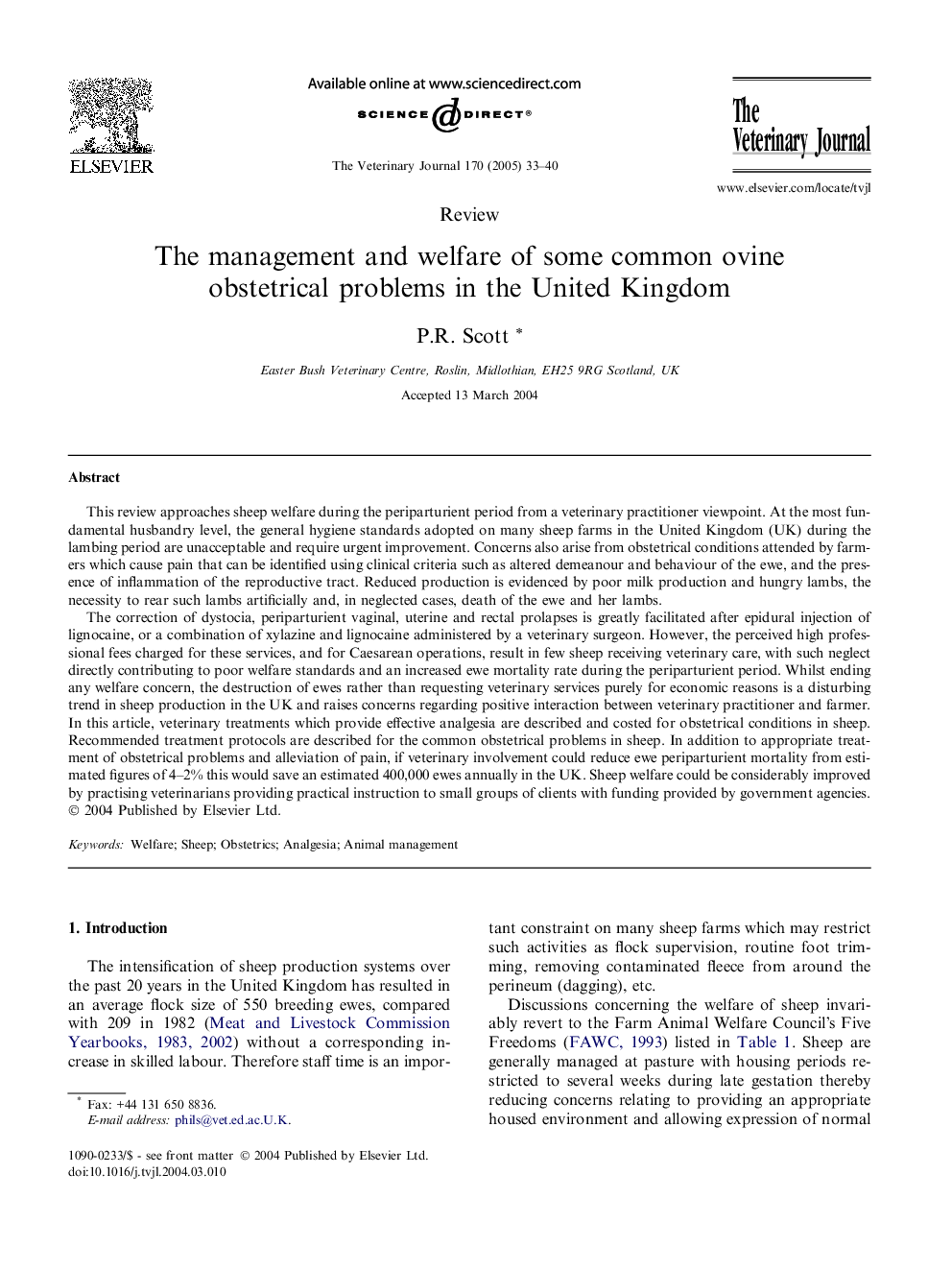| Article ID | Journal | Published Year | Pages | File Type |
|---|---|---|---|---|
| 8988715 | The Veterinary Journal | 2005 | 8 Pages |
Abstract
The correction of dystocia, periparturient vaginal, uterine and rectal prolapses is greatly facilitated after epidural injection of lignocaine, or a combination of xylazine and lignocaine administered by a veterinary surgeon. However, the perceived high professional fees charged for these services, and for Caesarean operations, result in few sheep receiving veterinary care, with such neglect directly contributing to poor welfare standards and an increased ewe mortality rate during the periparturient period. Whilst ending any welfare concern, the destruction of ewes rather than requesting veterinary services purely for economic reasons is a disturbing trend in sheep production in the UK and raises concerns regarding positive interaction between veterinary practitioner and farmer. In this article, veterinary treatments which provide effective analgesia are described and costed for obstetrical conditions in sheep. Recommended treatment protocols are described for the common obstetrical problems in sheep. In addition to appropriate treatment of obstetrical problems and alleviation of pain, if veterinary involvement could reduce ewe periparturient mortality from estimated figures of 4-2% this would save an estimated 400,000 ewes annually in the UK. Sheep welfare could be considerably improved by practising veterinarians providing practical instruction to small groups of clients with funding provided by government agencies.
Related Topics
Life Sciences
Agricultural and Biological Sciences
Animal Science and Zoology
Authors
P.R. Scott,
